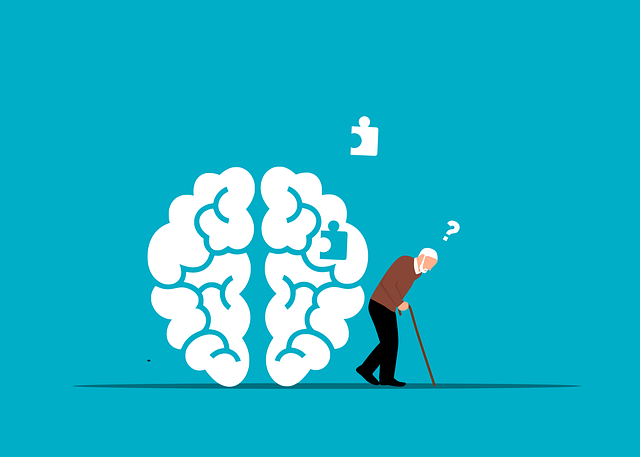Mood Regulation Techniques: CBT, Mindfulness, Lifestyle for Emotional Balance in Colorado Springs
In Colorado Springs, mood regulation techniques like self-esteem improvement and journaling, combine…….
In the realm of mental health services, specialized therapy for Post-Traumatic Stress Disorder (PTSD) has emerged as a critical component in supporting individuals who have experienced traumatic events. Among various therapeutic approaches, ‘Colorado Springs PTSD Therapy’ stands out as an innovative and comprehensive method gaining international recognition. This article aims to provide an in-depth exploration of this unique therapeutic approach, its mechanisms, global impact, and its role in shaping the future of mental healthcare. By delving into these aspects, we will uncover why Colorado Springs PTSD Therapy is not just a local phenomenon but a significant contributor to the worldwide effort to combat PTSD.
Colorado Springs PTSD Therapy, as the name suggests, is a therapeutic framework designed specifically to address Post-Traumatic Stress Disorder, which is a mental health condition often stemming from exposure to traumatic events such as war, accidents, natural disasters, or violent acts. This therapy takes its name from Colorado Springs, Colorado, USA, where it originated and gained popularity due to its high success rates in treating PTSD among veterans and other trauma survivors.
The core components of this therapy typically include:
The roots of Colorado Springs PTSD Therapy can be traced back to the late 20th century when researchers and clinicians began exploring innovative treatments for PTSD. The therapy’s development was heavily influenced by the high prevalence of PTSD among military veterans returning from combat zones, as well as individuals affected by natural disasters and community violence. Traditional talk therapy and medication management often proved insufficient in treating the complex symptoms of PTSD, leading to a search for alternative approaches.
In the 1980s and 1990s, pioneers in the field, such as Dr. Francine Shapiro, developed and refined exposure-based therapies, which laid the foundation for Colorado Springs PTSD Therapy. These early interventions focused on helping individuals confront and process traumatic memories directly, a significant departure from traditional talk therapy that often avoided direct discussion of trauma. The approach gained momentum when veterans’ advocacy groups and mental health organizations recognized its potential to aid those suffering from combat-related PTSD.
Colorado Springs PTSD Therapy has transcended geographical boundaries, gaining popularity worldwide due to its effectiveness in treating PTSD across diverse populations. Several factors contribute to its global appeal:
The implementation of Colorado Springs PTSD Therapy varies across regions, influenced by local healthcare systems, cultural norms, and political priorities:
Colorado Springs PTSD Therapy contributes to a significant global mental health care market, estimated at USD 46.3 billion in 2021 (Grand View Research). The demand for evidence-based therapies, particularly for PTSD, has driven investment in this sector:
The economic landscape for this therapy presents both opportunities and challenges:
| Opportunity | Challenge |
|—|—|
| High unmet need globally for effective PTSD treatment | Competition from established therapy modalities |
| Growing recognition of the therapy’s cost-effectiveness | Limited access in low-resource settings |
| Potential partnerships with tech companies for digital health solutions | Ensuring quality and standardization across diverse providers |
Technology has played a pivotal role in enhancing Colorado Springs PTSD Therapy, making it more accessible and adaptable:
Technological innovations have improved treatment outcomes and increased access:
The development and practice of Colorado Springs PTSD Therapy are shaped by various policies and regulations that ensure quality, ethics, and accessibility:
Policy influences play a crucial role in shaping this therapy’s evolution:
Despite its success, Colorado Springs PTSD Therapy faces several challenges:
Addressing these challenges requires collaborative efforts:
In a veteran affairs clinic in Colorado Springs, the therapy has been successfully implemented for military veterans suffering from combat-related PTSD. The program:
Following a major earthquake in Japan, local mental health organizations adopted elements of Colorado Springs PTSD Therapy to support survivors:
A non-profit organization in Toronto, Canada, adapted the therapy to cater to at-risk youth exposed to community violence:
The future of Colorado Springs PTSD Therapy holds immense potential:
To harness these prospects effectively:
Colorado Springs PTSD Therapy represents a significant advancement in the field of mental healthcare, offering a comprehensive and evidence-based approach to treating Post-Traumatic Stress Disorder. Its global impact, demonstrated through case studies and research, underscores its effectiveness across diverse populations. As technology continues to evolve and policies adapt to meet growing needs, this therapy is poised to play an increasingly vital role in addressing the global burden of PTSD.
By understanding its core components, historical development, and future prospects, we can appreciate the significance of Colorado Springs PTSD Therapy as a game-changer in mental health care. As we continue to navigate the complex landscape of trauma recovery, this therapy serves as a beacon of hope for individuals seeking healing from the profound effects of traumatic experiences.
Q: What makes Colorado Springs PTSD Therapy unique?
A: Its uniqueness lies in its comprehensive approach, combining multiple evidence-based techniques to address various aspects of PTSD. The therapy’s success rates and cultural adaptability set it apart from traditional talk therapy.
Q: Can this therapy help anyone with PTSD?
A: While effective for many, individual responses vary. The therapy is tailored to each person’s needs, so a comprehensive assessment by a qualified professional is crucial to determine suitability.
Q: How does technology enhance this therapy?
A: Technology improves access through online platforms and remote sessions, enhances engagement with digital tools, and offers innovative solutions like VR therapy and AI-driven support.
Q: Are there any side effects or risks associated with the therapy?
A: Like any therapeutic approach, it may cause temporary discomfort during exposure exercises. However, qualified therapists monitor progress closely to ensure safety and minimize risks.
Q: Can this therapy be combined with medication for better results?
A: Yes, many individuals benefit from a combination of therapy and medication management. A healthcare professional can guide the best approach based on individual needs.

In Colorado Springs, mood regulation techniques like self-esteem improvement and journaling, combine…….